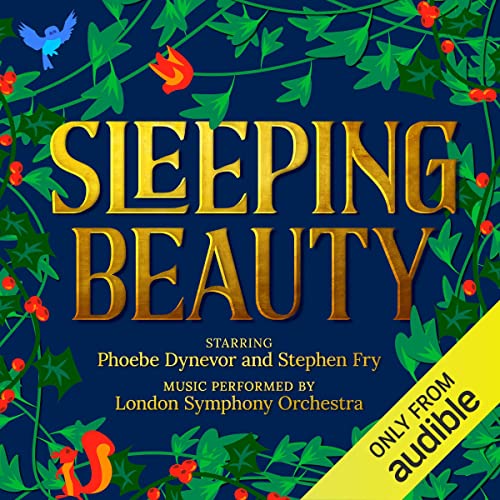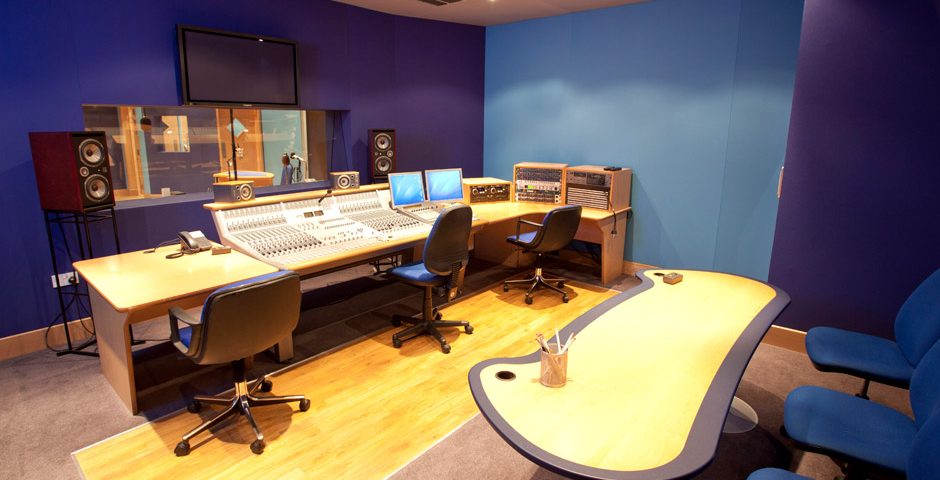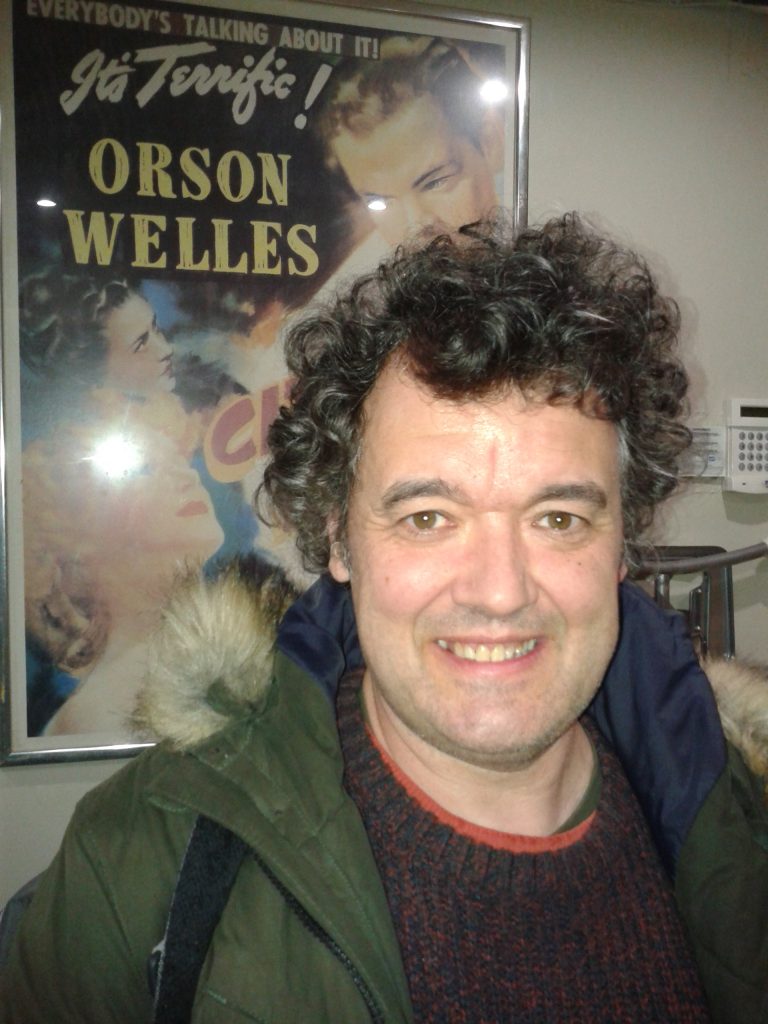Sleeping Beauty
Starring: Stephen Fry, Phoebe Dynevor, Rochenda Sandall, Adam Hugill, David Ahmad, Karen Bartke, Samantha Beart, Raghad Chaar, Amy Darton, David Holt, Simon Kane, Alyssa Kyria, Harry Myers and Kenton Thomas.

In August 2021, I directed Marty Ross’s new dramatisation of ‘Sleeping Beauty’ for Audible Originals, built on a specially-recorded soundtrack selected from Tchaikovsky’s beloved ballet score and performed by the London Symphony Orchestra.
The LSO recorded the music at their HQ in Clerkenwell over 4 days, conducted by ballet maestro Gavin Sutherland with musical direction from Jonathan Allen. I attended the final session, and to hear 65 musicians playing this spectacular music at full blast after 18 months of Lockdown without any access to live music was an exhilarating and surprisingly emotional experience. You can find out more about these recording sessions in this short feature.
Then it was my turn to go into studio at The Soundhouse in Acton for 4 days, to direct a fantastic cast of actors in Marty Ross’s rip-roaring adventure of a play. As well as telling a version with much more heart and guts than is usually found in this fairy tale, Marty set the actors plenty of technical challenges, including falling from a horse, scaling a waterfall and fighting an angry bear – plus assorted animal transformations – to which they rose superbly.

Usually in an audio drama, the play is recorded first and then music is composed and added in post-production. This play was a bit of an experiment, in that the score was pre-recorded and we then had to fit our scenes over the existing tracks. Once the dialogue had been expertly edited by the peerless Tshari King, Jonathan and I worked to match the dialogue and music before handing the recording over to our sound designer Steve Foxton, who then built the world of the play with accoustics, atmospheres and sound effects.
A top-notch cast and crew brought this unique production together, and we are very proud of the result. I hope people will enjoy listening to it as much as we enjoyed making it.
Interview with Marty Ross – Author of ‘Sleeping Beauty’
In preparation for the studio recording, I interviewed Marty Ross about his reimagining of the story and characters.

TC: Whose idea was it to do Sleeping Beauty?
MR: Audible wanted to work on a project in collaboration with the LSO, to create a drama that was tied in to an existing piece of classical music. I suspect they thought that, in the context of Covid, this story would have special resonance: we’ve all been under a spell, locked away from the wider world in a kind of suspended animation – and this is a story about undergoing the darkness and loss of that, but having the spirit to come out the far side, and regain what was lost.
TC: What was the starting point for making the adaptation?
MR: I have a background as an performance storyteller, so I am very much at home in the worlds of folk tales and fairy stories.
There are several well-known versions of this tale, but some are a bit inappropriate for modern family audiences. In the oldest Italian version, the Prince makes love to the sleeping heroine while she’s still unconscious and leaves her still asleep but pregnant – she gives birth and it’s the baby who sucks the splinter out of her finger and wakes her up. In the French version, the story doesn’t end with the waking up but has a whole subsequent act in which the Prince’s mother turns out to be a cannibalistic ogre, who tries to kill his new bride and her child. That might make for a great Gothic chiller, but maybe not a family entertainment. So I went with ‘Dornroschen’, or ‘Briar Rose’, the Brothers Grimm version – which is closer to what we think of as the classic story, and is also, crucially, the version Tchaikovsky worked from.
I did make my own changes. A scenario where a strange man creeps into the bedroom of a sleeping woman he’s never met before, kisses her and claims her for her bride the moment she wakes is a bit dubious in the era of “#MeToo” – but as a writer it’s also a much richer story if hero and heroine have a prior relationship, as star-crossed lovers forced apart and reunited. Sticking with the original story, love doesn’t kick in until the moment of the kiss at the very end, whereas in my version, the love story runs as a thread through the bulk of the tale.
I couldn’t take seriously the traditional fairytale Prince – some impossibly tall and handsome male model prancing about in doublet and hose. So my hero Peter is a more believable and down-to-earth character – human, funny and interesting and likeable. Plus, the fact that he’s a peasant and she’s a Princess adds an obvious dramatic obstacle to their love story.
The traditional Sleeping Beauty heroine is a completely passive figure for much of the story, whereas nowadays we like more active heroines. There’s no getting around the fact that she has to be asleep as a requirement of the narrative. But I reckoned a sleeping Princess could still be active and assertive in the world of dreams, could contact her true love through his dreams, guiding him on his quest, and be a more dynamic figure in that alternative dreamscape.
And a cliched Wicked Witch is a bit uninteresting to write, so my version of that figure, Cara (named for Tchaikovsky’s Carabosse), is a much more complex figure, one who doesn’t disappear after the casting of the spell but has a vivid character development and an agency of her own.
TC: What were the challenges posed by writing to a pre-existing score? It’s usually done the other way round.
MR: It didn’t feel that strange to me. I love classical music, and whenever I’m working on a script, almost the first thing I do is find pieces of music that have the kind of atmosphere I’m after. I’ll listen to those pieces repeatedly, free-associating, and get a lot of ideas that way – whole sequences in many of my dramas are shaped by the rhythm of a particular piece I was listening to at the time. For this script, I listened to the Tchaikovsky, which I’ve known since childhood, and just let images pop into my head, which I then expanded on. The Pots And Pans Man, for example, was inspired by the rather galumphing march at the end of the Third Act: who would move about to music like that, I wondered? And the figure of this great clanking giant just popped into my head.
Working this way also took me back to the very beginnings of my life in audio drama: as a child, I’d invent and record my own audio dramas, scoring them dramatically with discs of pre-existing music – some classical, including Tchaikovsky, but also all those film music recordings John Williams did with the LSO, so I got very good at incorporating pre-existing music into my stories – and, if it was a really good piece of music, shaping the scene to fit the music rather than vice versa.
TC: What are the challenges posed by this particular score?
MR: The obvious issue is that the dramatic part of the ballet is resolved by the end of Act 2. Act 3 is just an extended celebration of the happy ending that’s already happened, a series of grand set pieces and character dances from assorted fairy tale guests. It’s a wonderful thing to see performed at the Bolshoi or Covent Garden but not really translatable into audio drama – it would be forty minutes of characters saying “what a wonderful party; yes, isn’t it; yes it’s lovely; a happy ending indeed; yes, very, very happy; shall we dance again? And again?” I wanted our climax to come soon after Aurora awakes, so I had to redistribute all the Act 3 music I wanted elsewhere.
Audio drama can move much more freely in time and space than 19th century theatre could, and I wanted to exploit that freedom. I wanted to make the fullest, most dramatic use of the music but not to be tied to the traditional story or staging – to use the music fluidly, to not be afraid to create new narrative and dramatic contexts. I wasn’t interested in it just being the traditional ballet, with some dialogue sellotaped on top: ballet doesn’t need dialogue, that’s why it’s ballet. My challenge was to create a new work: a fully-fledged audio drama that would give fresh life to the music.
In the ballet, for example, once the Prince gets past the thorns he makes his way straight to Aurora’s bedside. But I wanted to make life more difficult for him, to throw an Indiana Jones-type series of challenges into his path, things that would have been difficult to do in a 19th century theatre but can be done very easily in an audio drama. So we’ve cherry-picked music from elsewhere in the score to cover that action sequence. And by using the music in this way, as a dramatic film soundtrack, if you like – we’ve been able to give Tchaikovsky’s magnificent score a whole new life.